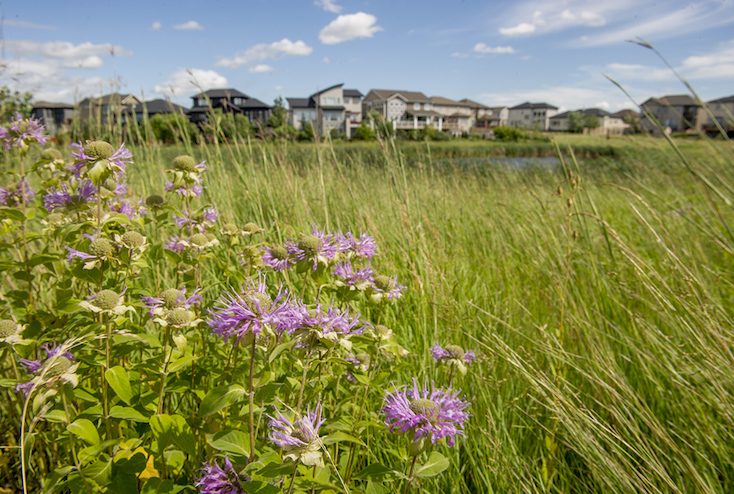
Ever wonder how you can make a difference for the health of wildlife living in and around Winnipeg?
Well you can, and it could be done right in your own backyard.
April 22 is Earth Day, a day dedicated to inspiring and supporting Canadians to connect with nature. Its goal is to encourage people to build a resilient community and this year’s campaign focuses on spending more time outside. That’s why we’re kicking off our Wildlife-Friendly Gardening blog series today and encouraging you to head out to your backyard and start creating a space to help not only RidgeWood West’s environment grow, but Winnipeg and beyond!
We’ll be providing you with expert tips to follow the simple best practices outlined by the Canadian Wildlife Federation (CWF) — such as adding native plants, water features and shelter areas — to get you on your way to having your yards and gardens wildlife-friendly.
The CWF runs a Backyard Habitat Certification Program that recognizes the amazing efforts Winnipeg families, like yourself, are making to ensure their backyards are wildlife-friendly. Not only will you be lending a helping hand to nature, but you can also gain the pride of having certified yard under the program.
So no matter the size of your yard, whether you have a small patio or a large back yard facing a wetland, your property can receive certification once specific criteria and established best practices are met! The best part is, if you get certified, you’ll remain certified for five years and will be eligible to purchase an official plaque to place in your garden.
But Why Certify Your Garden?
The program encourages best practices in landscape design and gardening, improves conditions for wildlife populations and promotes positive concepts of a natural and integrated landscape. Since its inception, over 900 individual residential properties that have been certified.
The benefits of wildlife-friendly gardening are many, not the least of which is how much it reduces the maintenance associated with a landscape.
- Preservation of local wildlife by offering them proper habitats and nourishment.
- Less yard work and water needed to feed the plants as native plants require less attention and water.
- Increasing the number of pollinators and birds that work towards creating a cohesive and self-sustaining biome.
- The scenery of natural beauty of butterflies, songbirds, hummingbirds, all surrounded by blossoms and foliage during Winnipeg’s warmer weather.
It’s time to start planting, so stay tuned for our next blog in this series, Wildlife-Friendly Gardening: Native Plants, to find out what to start adding to your garden!